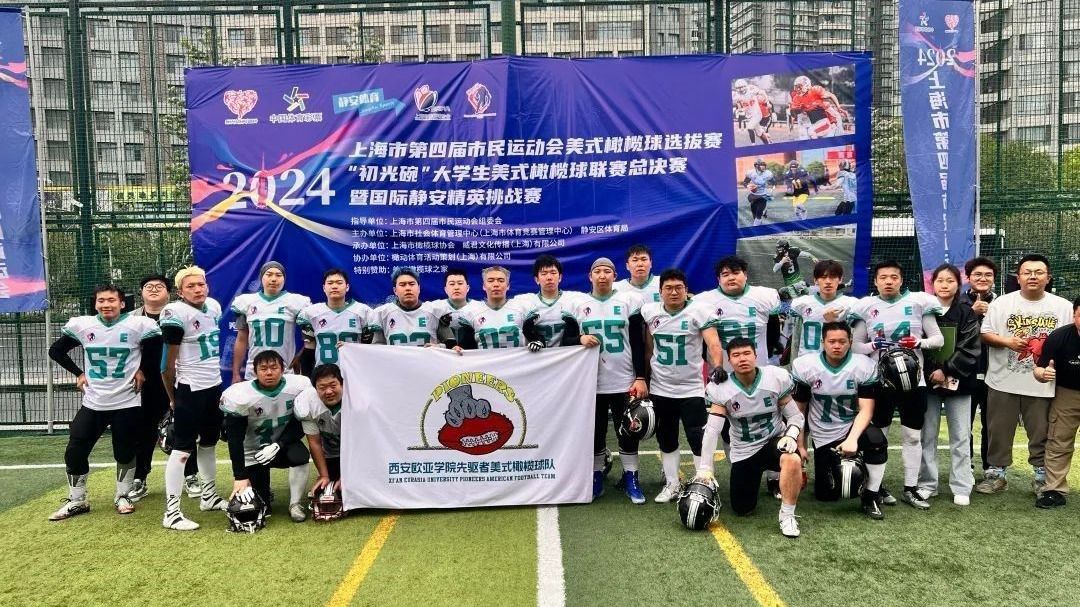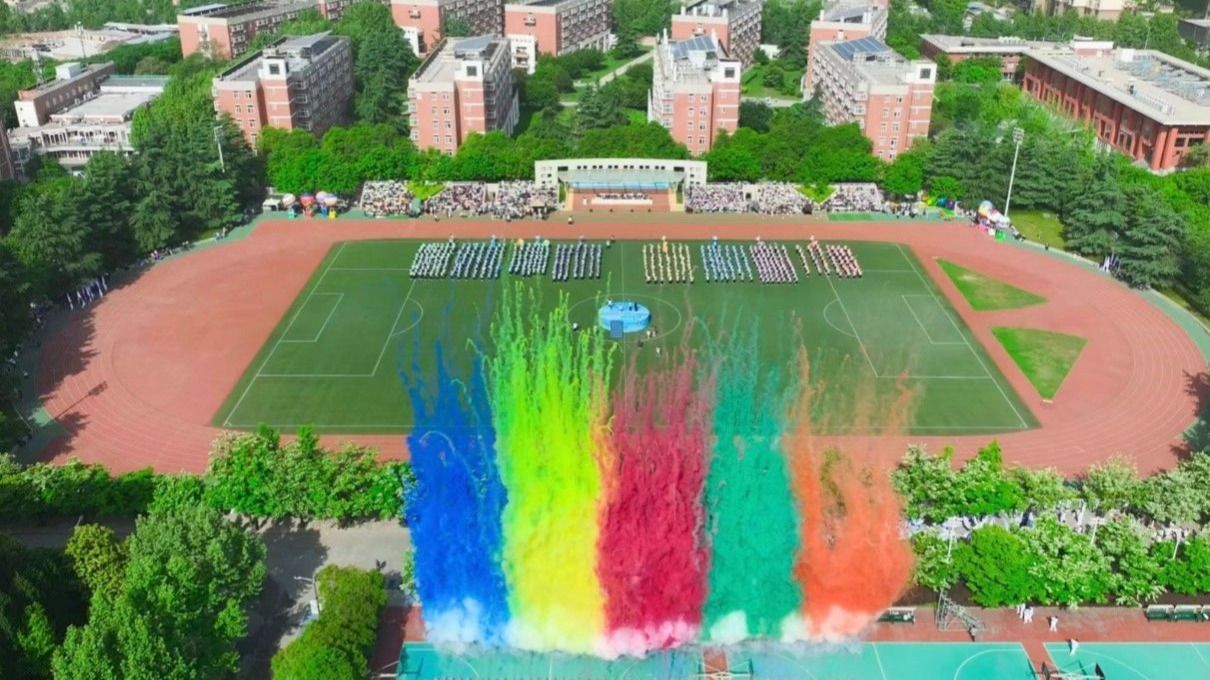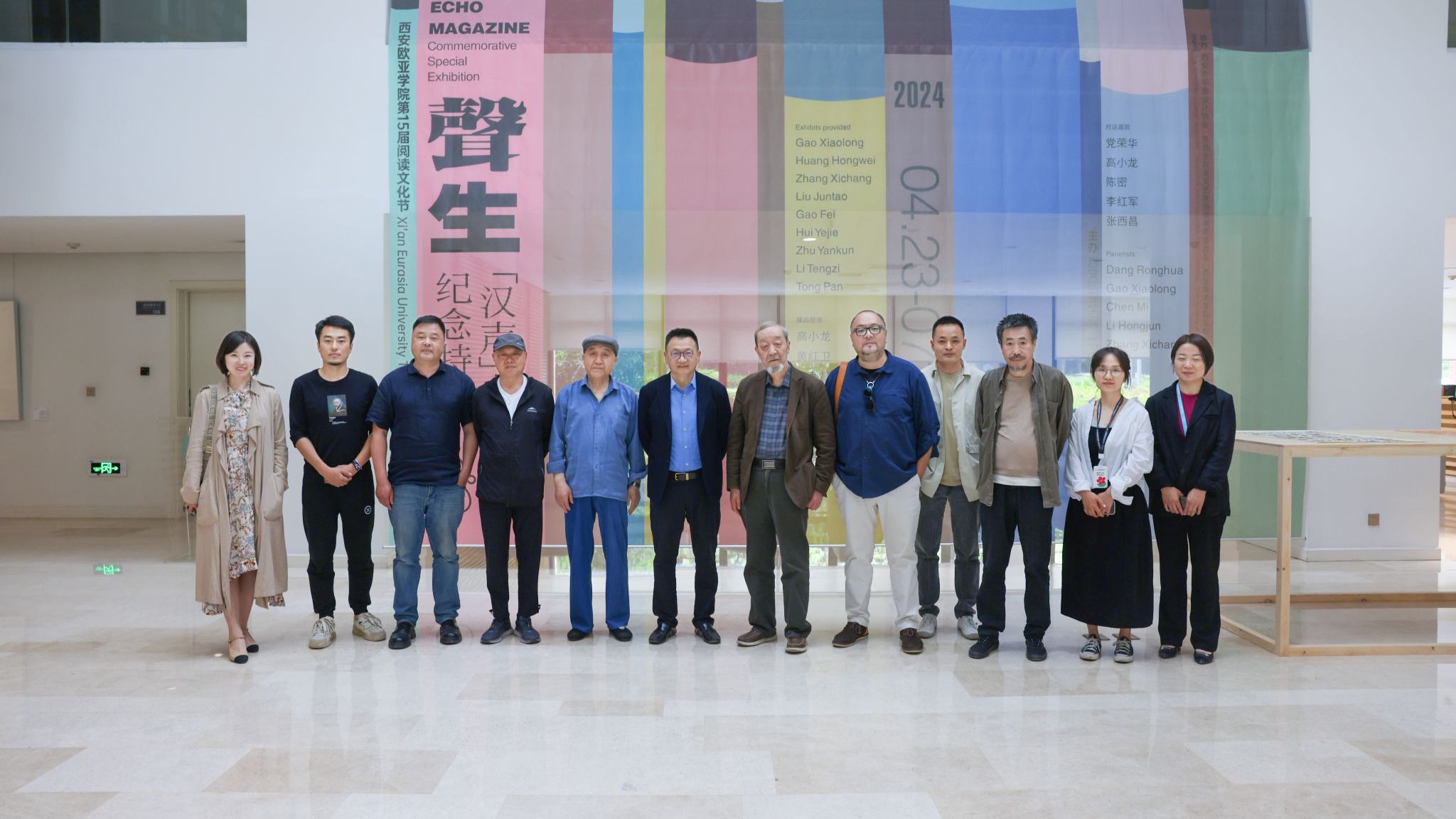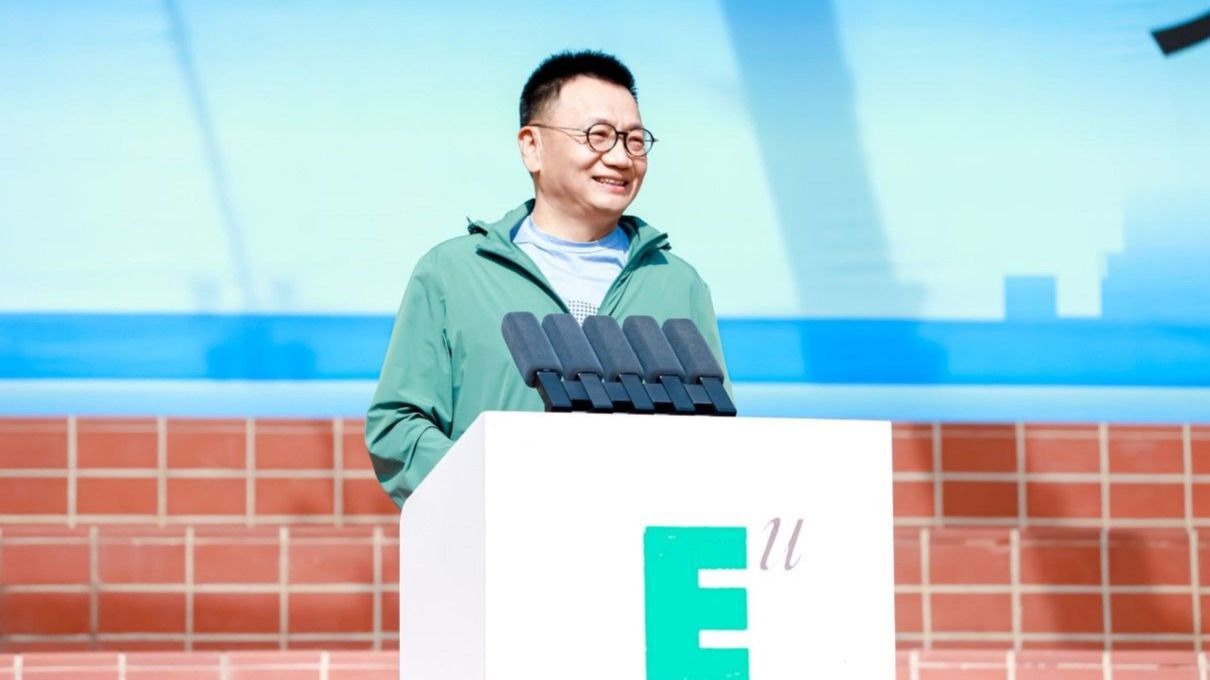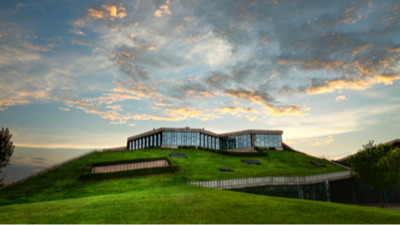Introduction: “Xi’an Eurasia University has been running for 25 years. Initially, it seized opportunities to achieve leapfrog development; next, it formulated systematic strategic plans to guide school running; then, it built a system of value-oriented education ideas and a sound education environment, shaping the mission-driven cultural consciousness and educational propositions. The university’s path of development and transformation proves that it has been actively adapting itself to the era and social environment, which features the change from elite-oriented and mass, to universal higher education in China. The essence of its environmental education lies in the building of a socialized environment for educators and learners in the university, encouraging students to explore their social roles and future social responsibilities.”

(Fig. 1) A picture from the China Education Daily (January 5, 2021)
Environment has a strong influence on people — a good one can shape values, cultivate truth, goodness, and beauty, and bring spiritual pleasure and resonance to those who are in it. A sound environment can make people better, and the process is unnoticeable. However, a socialized environment of such kind does not arise out of thin air. A firm belief creates an advanced culture, which can bring about a good environment, and such an environment can make people constantly improve themselves.
The campus environment of the Xi’an Eurasia University is designed to give everything there, including grass, trees, scenes, and objects, a vivid thought, allowing them to have useful spiritual dialogue and emotional communication with students. As a result, people can not only learn knowledge, but also understand what are beauty and exquisiteness, and how to live poetically as a complete person.
From Opportunities to Strategies
Andrew S. Grove, former Chairman and CEO of Intel Corporation, wrote in Only the Paranoid Survive that when a company changes its strategic paradigm, it sets out on a journey akin to moving from one mountain peak to another through what he calls a “valley of death”. Successful companies are familiar with one mountain, but must run to another one. The indicators on the way are not clear, the new mountaintop is hidden, and no one knows how long it will take and how to get there. At this moment, the climbing team is often caught in a fierce dispute in the valley between the two peaks — some people want to stay on the comfort and familiar old mountain, while others prefer to risk forward. Eventually, the team splits and all members die in the valley. Grove pointed out that crossing the “valley of death” set up for people by the strategic turning points is an ordeal that companies must go through. The key for a company to surviving the “valley of death” is the leader, who must have strong convictions and show no hesitation or doubt, in a bid to rally the team, although he might be the most fearful one. There is no more graphic and vivid analogy than Grove’s for the transformation and reform of businesses. Over the past 25 years, Xi’an Eurasia University has fully experienced such a process under the leadership of Hu Jianbo.
In the beginning, Hu Jianbo expanded Xi’an Eurasia University in traditional ways adopted by other private universities in Xi’an, such as applying for loans, renting sites, recruiting students, and hiring teachers. In 1999, the number of students enrolled in the university grew to nearly 7,000. In 2000, after being recognized as a private junior college, Xi’an Eurasia University welcomed around 6,000 freshmen. With about 11,000 students, it ranked one of “the top 10 private universities with 10000 students ”. In 2005, after becoming a private undergraduate university, the number of students enrolled in Xi’an Eurasia University soon exceeded 20,000.
Nevertheless, Hu Jianbo was unsatisfied — he wanted to turn Xi’an Eurasia University into one of the largest private universities in China. Thus, he came to study at the China Europe International Business School (CEIBS) under the recommendation of a friend. The two-year study thoroughly changed his ideas about school running: CEIBS’s school-running model meets international standards, making him think more deeply about “what is good education”; the systematic study of management-related knowledge gave him relevant ideas needed for scientific business operation. At the same time, his values also changed, and he reshaped his ultimate goals of school running.
“Thanks to the study experience at CEIBS, I realized that a shortage of market supply, instead of my own abilities, led to the fast expansion of Xi’an Eurasia University. This understanding is very important,” said Hu Jianbo. His prediction model built in a market analysis assignment when studying at the CEIBS conducted an in-depth projection and analysis of China’s higher education market. The results revealed that the number of students taking the national college entrance examination would peak in 2008 and then decline straight to a low point around 2018. This means that in the next decade or so, universities will be under greater pressure year by year or even suffer a survival crisis. Private undergraduate universities will be the first to withstand such an impact. Therefore, in the field of undergraduate education dominated by public universities, Xi’an Eurasia University has to highlight its characteristics to fight its way out. However, Xi’an Eurasia University learned from public universities to develop its talent-training plans for all undergraduate majors. As private and public universities have completely different development backgrounds, they enjoy distinctive development foundations, resources, faculty, student quality, organizational capacities, and historical accumulation. If Xi’an Eurasia University copies the public universities’ talent training models, it will be a follower of the latter for a long time. This is something Hu Jianbo cannot accept.
Given that, Hu Jianbo embarked on the journey of exploration, consistently introducing experts and consulting agencies to provide constructive suggestions on development. After becoming an undergraduate university, Xi’an Eurasia University had survived the entrepreneurial phase, completed basic construction, and considerably expanded in the first ten years. It then faced three major opportunities and roads for subsequent development. First, the university could establish branches in different places, continuously expanding its size; second, it could change into a public university, developing a sound discipline system and consistently improving its abilities of school running; third, it could innovate its ways of school running, growing into an international and innovative university recognized by the world. Inspired by the study experience at CEIBS and based on the market forecast, Hu Jianbo preferred the third road, but was not sure that it was the right one and did not know what it exactly looked like. Xi’an Eurasia University, after two to three years of exploration fueled by Hu Jianbo, proposed a ten-year development goal, which then became the “4+4+2” Strategy guiding the school’s growth, at the end of 2008. This was the first step for the school to achieve its ten-year strategic transformation and organizational change. From then on, it began to be student development-centered, instead of school development-centered, and started the teaching reform with the new educational concept of “Being International, Valuing Application and Offering New Experiences”.
In the process of transformation from 2008 to 2018, Xi’an Eurasia University acted upon the educational and teaching philosophy of “being student-centered” and endeavored to improve the quality of learning and campus life for students. The university has established a strategic management system involving five themes, namely quality, operation, prestige, organization building and management system, and informatization, with the “4+4+2” ten-year strategic goal as the guiding principle. In response to social demand and the goal to help students realize comprehensive and sustainable development, Xi’an Eurasia University rearranged disciplines, reformed the talent training models, reconstructed the curriculum, extensively promoted the youth community reform, and integrated liberal and professional education. All of these are to develop “high-quality and application-oriented talent with international vision, innovative spirit, and strong practical ability, who pay close attention to developing morals, know how to think, and are good at communication”. To ensure teaching reform and quality development, University carried out more than 10 innovative measures and special reform plans, including “internal management system reform”, “leadership improvement program”, “rainbow faculty development plan”, “knife-edge management accounting plan”, “enterprise-university cooperation talent training model”, and “Baldrige quality assurance system”. They have solved the key problems in strategic transformation, such as institutional constraints, leadership mismatch, weak faculty, financial resources constraints, low cooperative willingness of enterprises, and single evaluation criteria. As a result, it formed a featured internal governance model.
The development history of Xi’an Eurasia University reveals that the first decade (1995~2005) was a phase for barbaric growth, when it rapidly became one of the “Ten Private Universities with 10,000 Odd Students in China” and was qualified for the establishment of a campus covering 1,000 mu and undergraduate enrollment. Although lacking ideas on school running and developing for the sake of development, just like many of its peers, it seized the major opportunity offered by the country to encourage universities to boost enrollment quotas, which laid a foundation for its future growth. Therefore, the first decade was an opportunity-driven phase for extensive development. In the next 3 years (2006-2008), Xi’an Eurasia University actively, also passively, entered a transition and preparation period for transformation, trying to explore new directions of future development. From 2009, Xi’an Eurasia University has been in a period key for “4+4+2” Strategy implementation. During this time, it proactively strove to meet the social needs for mass higher education; built a strategic management system with rich content; transformed external pressure into internal impetus; completely broke the school running model naturally formed during the past ten years or so. By systematically reconstructing the school, the system, and the team, the university created a unique school running model, which won wide praise from relevant stakeholders. In this decade, Xi’an Eurasia University gradually found and consciously shaped itself, and truly laid a solid foundation for its 100-year plan.
After ten years of development, Xi’an Eurasia University successfully moved from an opportunity-driven to a strategy-driven organization, established an elegant and modern independent campus, formed a stable school size, realized a system with undergraduate education as the core, and set up the “student-centered” educational philosophy. All of these have created sound conditions for the university to pursue a more ambitious mission and high-quality development goals, and developed a good environment for school running and career development.
From Strategies to Missions
During the ten-year phase guided and driven by the “4+4+2” Strategy, teaching reform, team building, performance assessment, and other elements of scientific management were particularly essential to Xi’an Eurasia University. More importantly, the university embraced awakening self-awareness, growing values, and development from cultural enlightenment to cultural self-awareness during this process.
In 2015 when Xi’an Eurasia University celebrated its 20th anniversary of founding, it established the motto of “Harmony in Diversity”, a key milestone in the exploration of cultural self-awareness by the university. “Harmony in Diversity” was derived from instructions of ancient ideologists and then became the educational philosophy and a core value of Xi’an Eurasia University. It refers to the diversity in unity. “Harmony” means the supreme goal of an educational entity with missions, which is to realize the whole person education for kindness, truth, and application and make education a vital cornerstone for social development and human progress. This is the best “unity”. “Diversity” means to stay independent. As an educational entity, Xi’an Eurasia University should build its own features, while pursuing higher goals of education.
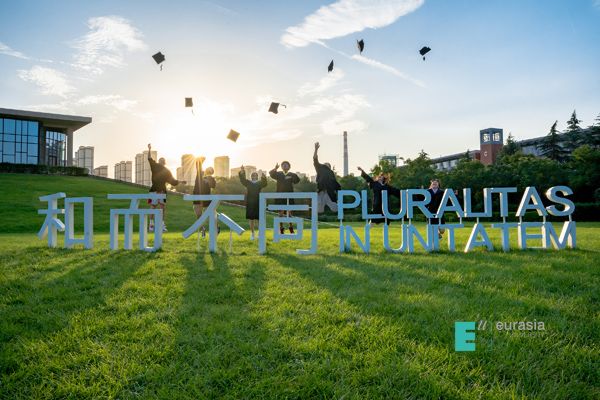
(Fig. 2) Sculpture of “Harmony in Diversity”
When powering educational reform and school development, Hu Jianbo is most pleased with two things: first, he has basically built a beautiful university campus in Xi’an with the school running philosophy of “being international” as the base; second, he has succeeded in creating a new middle and senior management team, of which the members share the same values. Trained by a decade of changes, this team has developed. What’s more important is that they are still young and can support the great development of Xi’an Eurasia University for a longer period in the future. In other words, the university enjoys the necessary management talent at least. However, relying on management alone is not enough, if the university wants to truly realize the grand vision of “becoming the most respected private university in China” and the great dream of establishing a century-old renowned university. It needs to ensure that every staff member shares common values, works together towards the same goal, genuinely loves education, is not pleased by external gains or saddened by personal losses, and is able to influence every student.
Xi’an Eurasia University was about to end the ten-year strategic transformation period in 2018, when Hu Jianbo led the middle and senior management team to conduct several discussions and collective study sessions again, forming many new insights. China is experiencing a complete transformation and thorough changes in economy and society. In response to that, higher education is developing rapidly and will soon enter the stage of universalization from the stage of popularization. Meanwhile, the social demand for education is expected to be increasingly diversified and rational. The Community Party of China and the country strongly support the reform and development of education and achievement of breakthroughs. Correspondingly, higher education has entered a new era of change and innovation. The historic task facing all universities is to promote diversity and high quality in higher education as well as the development of respective characteristics. Most private universities have also started to pursue connotation and quality, and the market welcomes a variety of school running models, such as being research-oriented, being international, establishing a school of arts and sciences, being application-oriented, and being comprehensive. How will Xi’an Eurasia University play its role in such a historical trend? As Eric Ashby, a British educator, wrote: “Like animals and plants, universities are products of heredity and environment.” Higher education should be rooted in China. In such a soil and environment, how to operate and develop a private university and how to really carry out the fundamental task of moral education and talent training depends on the values of the operator, what they want to be and what they want to do. The ultimate goal of Xi’an Eurasia University is to become an excellent school that could stand for a hundred years. After discussions, the university made it clear in top-level design that it will follow the national system and policies of higher education. It will also respect and face the cultural and social environments in which it lies, the specific environment of industrial development and the environment of its own resources and conditions, and give full play to its subjective initiative to explore and make bold changes in international development, educational innovation and quality construction.
At the university’s mid-year meeting in July 2018, Hu Jianbo delivered an important speech on Value-Oriented Education in the Next Decade, which set the tone for the development of the university in the next ten years. Hu explained in detail what exactly the value-oriented education is as follows.
In the field of higher education, every operator is pursuing scale expansion and quality improvement. However, Xi’an Eurasia University gave up the former more than a decade ago in order to single-mindedly pursue higher quality. That’s why the university can become what it is now. My initial understanding of “quality improvement” is the same as everyone else’s: to select better students, to upgrade from a third-tier university to a first-tier one, to expand the scope of educational services to cover not only undergraduates but also master and doctoral students, to employ teachers with higher degrees, to get more research results, to get more funding for school running, and to strive for a better ranking among all universities. For higher education institutions, these seem to be the natural connotation of “quality improvement”. This year, however, I suddenly figured out that Xi’an Eurasia University doesn’t need such “quality improvement”. The happiness of education is around us, so what we really need to focus on are things that won’t change in the future. For education, the constant things are: to make teachers love education and have the willingness, ability and willpower to educate students; to allow students to grow up naturally and receive good education with no need of expensive tuition; to enable the graduates to be popular with their employers and receive high praise from them.
In the past decade, Xi’an Eurasia University has realized its education philosophy under the promotion of scientific management elements such as strategy driving, organization reshaping and institutional building. Anyway, the essence of value-oriented education is still centered on student development. As the elements of scientific management become increasingly abundant, the university urgently needs new internal driving force to continue to promote the implementation and flourishment of the student-oriented development doctrine. Therefore, promoted by the elements of cultural management like mission driving, vision leading and value building in the next ten years, the university will fully move towards high-quality and connotative development and continue to play a leading role in the private higher education industry.
Value-oriented education is both a value judgment and a strategic choice made by Xi’an Eurasia University based on the understanding of the future development trend of education and its connotation, and also an ultimate pursuit and firm belief in future education. For this reason, it is also the fundamental idea of environmental education in the university. Its essence lies in clarifying the university’s orientation, discovering the beauty of education, feeling the happiness of education, and focusing on the “things that will remain the same in the future”. Pulled by an ambitious vision, the university, as an organization pursuing excellence, has realized the transformation and upgrade from strategy-driven to mission-driven development through exploration and accumulation at different stages. The values will be gradually accepted by all employees and efficiently transformed into their active and conscious behavior, so that Xi’an Eurasia University will truly have a rock-solid foundation for its future development. It’s just as John Winston Lennon said, “A dream you dream alone is only a dream. A dream you dream together is reality.”
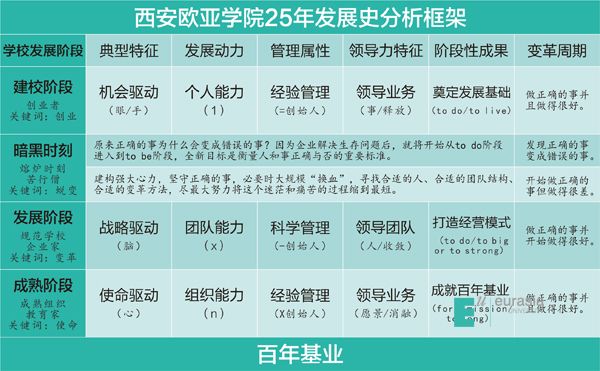
(Fig. 3) Analytical Framework of 25 Years of Development History of Xi’an Eurasia University
In 1999, colleges and universities across the country started the great expansion of their enrollment and the construction of their new campuses. The new round of land acquisition enabled Xi’an Eurasia University to cover a total area of nearly 1,000 mu, basically solving the problem of campus land.
As a large piece of land had been acquired, Hu Jianbo began to have a higher level of pursuit, hoping to plan and design the campus with a high starting point to make it a century-old prestigious university in the future. Hu Jianbo once happened to see the new campus built by Zhejiang Wanli University on TV, which surprised him because he had never seen a university campus in that style before. He immediately asked a staff member to contact Ningbo Architectural Design & Research Institute that designed the new campus for Zhejiang Wanli University. He hoped the institute could help plan and design a new campus for Xi’an Eurasia University. After the campus design was completed and several teaching buildings were built, Hu Jianbo found that the overall effect was very similar to that of Zhejiang Wanli University. The red brick buildings more commonly seen in the south appeared for the first time on a university campus in Xi’an. However, it turns out that the several teaching buildings that were built at the beginning are not suitable for the campus. It’s very cold in northwest China in winter but they have too many windows. Besides, there was not enough money to install air conditioning in every building, so these buildings were not good enough for the faculty and students at that time. They’re more suitable for campuses in the southern region. Anyway, red brick buildings were extremely fashionable and refreshing among colleges and universities in Xi’an at that time, which was exactly the effect Mr. Hu wanted. Subsequently, the combined teaching buildings in the north area of Xi’an Eurasia University, and 10 student dormitories and catering buildings in the west area were completed and put into use one after another.
After becoming a full-time general technical college of higher education that had been formally allowed to enjoy the national unified enrollment policy in 2003, Xi’an Eurasia University started to prepare for a library. Being of special significance for a college/university, a library is often the place that reflects the spirit of a college/university. Therefore, Hu Jianbo was determined to make the library of Xi’an Eurasia University a landmark building that support the university students spiritually. After careful comparison and consideration, the university finally selected Guan Zhaoye and his team as the designers. Mr. Guan is an academician of the Chinese Academy of Engineering and a professor of the School of Architecture of Tsinghua University. Among the several design proposals submitted by the design team, the one most recommended by the team caught Hu’s fancy immediately. It consists of a mountain-shaped building spread out horizontally and a clock tower standing up vertically, combining spatial and temporal elements and featuring well-proportioned high and low buildings.

(Fig. 4) Library
“We chose this proposal for a very simple reason. The east gate of the university is directly opposite the Qingliang Mountain, so we wanted to build the library as a ‘mountain’ of knowledge to pair the mountain of nature,” said Hu Jianbo. The library was initially planned to take more than a year to complete with an investment of more than 30 million yuan. With breaks in the midway, however, it ended up being built for more than three years, costing a total of nearly 70 million yuan. This is what Hu Jianbo did not expect. The library, to Hu’s satisfaction, has indeed set the university at a high level in terms of taste, spirituality and aesthetic perception, and has become one of the major landmarks in Xi’an. In 2009, the library was awarded the highest honorary award for architectural design in China by the Architectural Society of China, that is the Architectural Society of China Excellent Architectural Creation Award at the 60th Anniversary of the Founding of the People’s Republic of China.
With the gradual expansion of the student population to more than 20,000, the university built a new multi-purpose gymnasium, a new stadium, a new building of Golden Bridge Restaurant and six new student dormitories in 2006. In 2010, the oldest (No. 1) teaching building and the old administrative building were facing demolition because of Dianzizheng Street that will run through the campus. Xi’an Eurasia University invited the School of Architecture of Tsinghua University again to design and build a new administrative building and four teaching buildings in the shape of quadrangle at the location of the former Eurasia Driving School with a brand new design concept. These buildings officially came into use in 2013. Under the leadership of Hu Jianbo, the requirements for architectural design of Xi’an Eurasia University became increasingly higher at that time. This group of buildings integrated a number of new architectural and environmental concepts. For example, the design of the administrative building’s central part gives a feeling of openness and brightness. As several beams must be added to support the whole building, the designers designed several characteristic transparent bird’s nest shaped meeting rooms along the beams. Thus, the pattern and taste of the whole building was raised a notch, making the building extremely distinctive. The meeting rooms of other institutions of higher education are closed, but those of Xi’an Eurasia University are open and transparent so that the interior of them can be seen clearly from the outside. It fully reflects the management concepts of the university.
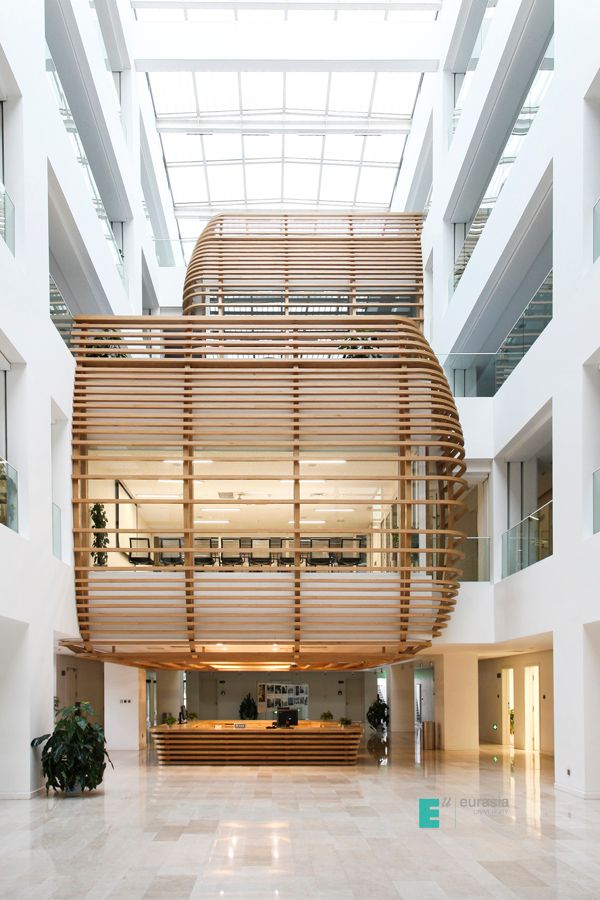
(Fig. 5) Administrative Center
From 2014, Xi’an Eurasia University stopped erecting new buildings on a large scale. Instead, it started to renovate the teaching buildings and dormitories built earlier in an all-around way, and put the focus of new projects on landscaping. The campus construction entered the stage of public environment construction and old building renovation in a comprehensive manner. Under the guidance of the new international “student-centered” education philosophy, the teaching buildings and dormitories built in the early years were unable to meet the needs of students’ development. To solve this problem, Xi’an Eurasia University gradually formed its own concepts of old building renovation and environmental construction after exploring and promoting the integration of school-running proposition and education and teaching ideas into the space layout, building renovation and landscape design.
First, the university pursues people orientation and advocates life education. Under the influence of Hu, the university advocates the addition of living elements to teaching spaces and learning elements to living spaces. The first and paramount concept set up in the renovation of old buildings is to make them more comfortable in terms of air conditioning, heating, lighting, colors and the ventilation system. Besides, the university tries to open up as much space for students’ public activities as possible, set up communication space in the spare space of the teaching buildings, and even introduce coffee shops. Among them, there are unique “living rooms” built for offering comprehensive learning and living services between the old dormitory buildings. The newly built “living room” in the south area is erected with a steel structure and new glass materials. As a corridor of more than 70 meters long with a minimalist industrial style, it is hidden and visible with the changes of light and shadow. Additionally, it integrates a convenience store, a restaurant, a gym, an office area, a meeting area, a self-study area and a public bathroom, which open 24 hours a day. Equipped with air conditioning, heating, an elevator, and a ventilation system, the “living room” is very comfortable.
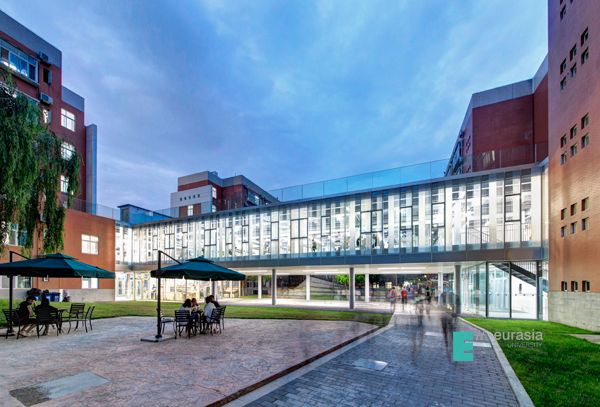
(Fig. 6) “Living Room” in the South Area
Second, the university fully supports the new education and teaching reform. The construction units, building users (schools) and the owner (the university) must participate in the whole renovation process of every teaching building of Xi’an Eurasia University, thus jointly completing the construction and innovation of the educational space. In the renovation of teaching buildings, the university removed many partition walls and used new glass materials instead to enhance the openness of the learning space. In terms of the hue, it comprehensively changed the past gray and dull color system to make it fresher and brighter, which will naturally put teachers and students in a good mood. With regard to space, there is a large area of new public space for discussion, and some multi-functional areas with many curtains and only a few walls. With a high utility rate of space, the university can easily serve the students’ needs without having to build too many new buildings. If the educational space cannot support the teaching reform, practicing the international philosophy on running school will become nothing but empty talk.
In addition, the university’s concept of architecture and environment is in line with international standards. At the early stage of development, the university only required economical and practical buildings, but under the new international philosophy on running school, the renovation of the old buildings must be fully in line with international standards. Therefore, the university practices new concepts such as green buildings and smart buildings, fully adopts new materials that are green and environmentally friendly. For example, the exterior walls are made of insulating glass, which is green and energy-efficient, making people more willing to stay in these buildings. In Hu Jianbo’s view, the architecture and environment are very crucial for a university to become a center of science, education and culture in a region. Only if visitors could see pioneering architectural sculptures, beautiful spatial environment, high level of aesthetics and the application of green technology when walking into the campus, can the university has the potential to lead the social progress. “The architecture and environment of a university must fully reflect its own values. For Xi’an Eurasia University that pursues the international philosophy on running school, its architecture and environment must be green and environmentally friendly, simple but not luxurious, comfortable and low-key; they must also include both artistic and living elements. As a smell of freedom, equality and openness permeates the university, a sense of happiness will surely arise spontaneously,” Hu said, “When walking into the newly built administrative and teaching buildings, students’ attitudes and behaviors changed, so I thought a good environment was of great importance.”
Under the new concept, the university’s teaching buildings in the west area and Building E in the north area have been renovated, and the catering buildings and the Golden Bridge Restaurant are still under renovation. Due to the new concept and high standard, the renovation of each building in the university costs as much as tens of millions of yuan. Therefore, in recent years, the university has divided its campus renovation projects into three categories: large-scale construction, moderate renovation and micro-renovation. It selected specific renovation plans according to the differentiated features of those old buildings, thus effectively controlling the costs. “In the past few years, we chose to renovate old buildings instead of erecting new ones for the following reasons. First, although the cost of old building renovation is high, it’s much lower than that of new building construction. Besides, we hope the school can retain its sense of history, so that our students could feel the development of buildings in different eras without going out. In this way, we strive to form historical depth and a humanistic and artistic atmosphere through campus architecture and environment,” said Hu Jianbo.
As more progress is made in education and teaching reform, organizational transformation and campus culture construction, Xi’an Eurasia University has gradually completed the metamorphosis from having an appealing natural environment to creating a sound learning atmosphere with the essential goal of reconstructing the relationship among people, education and campus architecture and environment under the “student-centered” educational philosophy. The tangible architecture, landscape and physical environment of the campus also contain the intangible historical, traditional, cultural and social value, which has great potential educational significance. Teachers and students on the campus will interact and dialogue with the architecture, landscape and environment at the spiritual level through their first-hand experience and personal interpretation of a specific environment. Therefore, the campus environment has an imperceptible influence on the attitudes, emotions and values of teachers and students, making itself a kind of “hidden course”. On this basis, Xi’an Eurasia University’s “student-centered” education model not only highlights teaching and administrative services, but more highlights campus life. Education is life and environment is also education. In the brand-new educational philosophy of Xi’an Eurasia University, the campus is not a simple physical space, but an education field full of energy, and campus environment is an integral part of the education products provided by universities for students, and has an extremely important function of life education, because students both learn and live on campus.

(Fig. 7) Rendering of the Student Integrated Services Center in the West Zone
In October 2019, Xi’an Eurasia University commenced the construction of the Student Integrated Services Center in the West Zone. Designed by Denton Corker Marshall, an architecture firm in Australia known for innovation, the project consists of high-rise student apartments, garden courts and other spaces, and integrates accommodation, leisure, entertainment, catering, social contact and other functions. This has been another new building constructed by Xi’an Eurasia University since 2010. Its purpose is to meet the accommodation needs of students with the new philosophy, and improve the quality of living spaces and the living experience of students in a systematic way.
So far, the allied government department has approved the campus construction plan of Xi’an Eurasia University. In the future, more and more future-oriented buildings will appear on the campus of Xi’an Eurasia University. In the eyes of Hu Jianbo, educational philosophies are ever-changing and educational technologies are constantly growing. Therefore, he advocates that university campuses should not rigidify everything with buildings at a time, but should let campus construction and environment keep developing like living things.
“A lot of people are unaware of the huge impact of environment, and when people resonate with space, they would respond positively. The reason why Xi’an Eurasia University puts a premium on the campus environment is that we think it’s more than an educational facility, but an essential component of our educational products and services.” Hu Jianbo said, “Environmental education has always been a very important educational philosophy advocated by Xi’an Eurasia University. We hope that when students enter our campus, they can feel an international educational environment just like that in European and American universities... We strive to redefine beauty and sophistication in the eyes of our students, and teach them how to live a poetic life as a human being.” In fact, universities are not only an educational institution, but also play an important role as regional cultural leader and carry significant historical and cultural value. In terms of either overall planning, architectural beauty, or environmental quality, Xi’an Eurasia University has developed a comprehensive edge over its peers.
From “looking for job” to “being looked for by job”
In the movie Casablanca, there is such a line: “In your present temperament hide the path you have traveled, the books you have read and the people you have loved.” Xi’an Eurasia University’s environmental education is ultimately reflected in the continuous growth and holistic development of students. Notably, the development here is not to develop specific skills, but to develop a person who has independent and comprehensive abilities and can adapt to the changing environment and develop his/her “spiritual appearance”. When we walk into Xi’an Eurasia University, it is not difficult to find the differences between its students and those of other universities in terms of glowing faces, manners, behaviors, and dressing styles. It encourages students to be themselves and display their hidden aspects, so it highly respects the diversity of students. As a result, more and more students and parents have recognized its international educational philosophy and chosen to apply for it. This also comes as a result of the systematic and structured student training system under its philosophy of environmental education.
With the progressive and in-depth introduction of the “student-centered” educational philosophy and method into the teaching system, Xi’an Eurasia University has explicitly put forward to list “adaptability” among its educational quality concepts. Specifically, this concept focuses on aligning education goals with social demands, education processes with student-specific characteristics, and quality commitments with resources obtained. After a systematic review, Xi’an Eurasia University has summarized four development directions for its students. The first is physical development, such as the physical education courses of the School of General Education, the cultivation of students’ living habits in the communities, the psychological counseling provided by the Psychological Counseling Service Center, etc. The second is rational development, mainly through the education and teaching work provided by the secondary schools. The third is career development, which is primarily handled by the Career Development and Corporate Cooperation Department (DCC) and the secondary schools. The fourth is social development, which is mainly handled by the communities with a view to helping students quickly integrate into society in the future. The key of putting forward the four student-centered development directions is to bring to a complete end the old one-dimensional talent training model and create a new one. In the old model, the universities primarily relied on secondary schools, whereas in the new multi-dimensional one, general education is emphasized, and secondary schools, communities and societies are all involved and each has their respective clear responsibilities and roles with the aim of promoting holistic development.
Since 2014, a new student enrolled by Xi’an Eurasia University started to have three identities: A learner in the secondary schools, a residential student in the communities, and a member of the societies. Dormitories are allocated no longer according to schools and disciplines, and it is required that four grades of students must be distributed evenly in each dormitory and students in each room must come from at least six majors. First, students from different majors can compare notes. Second, students can expand their social circles, increase their connections, and accumulate social capital. Third, relevant activities and news of different schools can be promoted between each other.

(Fig. 8) Intercultural Communication Activities
Driven by the completely new strategic positioning of building an application-oriented university, Xi’an Eurasia University has carried out university-wide restructuring of secondary schools with fields and industries as direction and called for each secondary school to re-develop majors based on the competence models of each major’s targeted jobs in the hope of helping graduates completely meet the competence requirements of relevant jobs. To this end, Xi’an Eurasia University has made a big push to advance the integration of industry, education and research in the whole university, and achieved remarkable results.
Taking the School of Finance as an example, in the process of promoting the industry-education-research integration, it boldly brought forth such slogan -- Go out of the East Gate to grow together with enterprises and create an educational environment that integrates industry and education! In order to fully keep in line with industry development directions, the finance major has set up the financial investment direction related to investment, risk control and credit investigation direction related to big data, and fintech direction related to fintech. Each of the three directions is jointly built with one industry-leading enterprise. In order to forge really close partnerships with enterprises, the School of Finance has pioneered the establishment of diverse university-enterprise joint cooperation platforms such as joint laboratory and joint research center and encouraged enterprises to put the important but not urgent projects onto these platforms so that the teachers of the School of Finance and the staff of the enterprises can together effectively solve the actual problems facing enterprises in the way of project and students can also take part in the process. For example, the School of Finance has built a comprehensive big data laboratory together with Xiongjiujiu Education Technology (Beijing) Co., Ltd., a visualization laboratory together with Meritdata Technology Co., Ltd., and a deep learning laboratory together with Beijing Percent Information Technology Co., Ltd. In the process, enterprises can obtain intellectual support from universities at low cost, and the School of Finance can effectively cultivate application-oriented teachers, and transform the real project processes from enterprises into scientific research achievements, academic papers and teaching cases and then apply them to practical teaching, thus effectively realizing the integrated operation of industry, education and research.
In the meanwhile, Xi’an Eurasia University has worked to strengthen the teaching of general capabilities and useful knowledge, advocate holistic education and improve practical skills. In 2012, Xi’an Eurasia University reorganized the Basic Education Department into the School of General Education to fully implement the philosophy of holistic education. In addition to English, basic computer engineering, advanced mathematics, college Chinese, physics, political education and physical education courses, the School of General Education has focused on the ideal portrait of Xi’an Eurasia University graduate which is a citizen of the world and highlights character, thinking, good communication, international vision, innovative spirit and practice ability, and developed its DNA courses including humanities, sciences, business cooperation, critical thinking, structured writing and Office skills which are considered compulsory modules for cultivating the general capabilities of students. In 2018, Xi’an Eurasia University further integrated the DNA courses into two modules, i.e. “Writing and Expression” and “Thinking and Innovation”, and increased the credits and class hours properly.
In order to promote students’ career development, Xi’an Eurasia University reorganized the employment department into DCC in 2018 to take charge of students’ career development and the university’s industry-education cooperation. The work team of DCC and all the secondary schools together developed a 10-year plan to establish procedures and standards for work in all respects and create the “one vertical and three horizontal” career development system which divides students’ career development from the first year to the senior year into three stages. Specifically, the first and second years are defined as the stage of career cognition, the junior year the stage of enterprise practice, and the senior year the stage of career development. In each stage, diverse courses, activities, training camps, career planning competitions and other ways are used to establish support for setting up a complete set of career development systems for students and comprehensively improving the career development level of students during their study at the university. In the next ten years, Xi’an Eurasia University aims to achieve the following development goal in terms of students’ employment: 10% of the students will get further education at high-quality universities worldwide and 20%-30% of the students will work in Fortune Global 500 companies and unicorn companies with an average salary higher than graduates from similar undergraduate universities. Xi’an Eurasia University has divided the overall goal into different sub-goals which are tasked with all the functional departments and secondary schools. As DCC is also in charge of the university’s work of integrating industry, education and research, it can efficiently advance the coordinated progress of industry, education and research integration work and employment work.
The mission of Xi’an Eurasia University is to “provide high-quality education and service for students”, which includes high-quality teaching service and high-quality life service. From the specific perspective of communities, it is to enable students to live a better life. In the process of community management, community supervisors and counselors will teach students how to clean, store, do makeup, dress, arrange flowers, hang pictures... In addition to social development, it also contains rich courses related to life aesthetics. Through the effective implementation of the new multi-dimensional holistic-development-oriented model featuring the three-pronged involvement of secondary schools, communities and societies, Xi’an Eurasia University will offer more colorful non-curriculum activities for students, and will also help them develop a stronger sense of goal and value. According to the results of many surveys such as the Chinese College Student Survey (CCSS) conducted by Tsinghua University’s Institute of Education, the time spent on social practice and society activities by students of Xi’an Eurasia University is much more than the average level of domestic universities. Just as the Harvard Political Review said, extracurricular activities have the function most classroom teaching cannot provide: Teamwork, leadership, indomitable willpower, good character, social relations and opportunity of learning in the “real world”. Rich extracurricular activities not only can help make for students who are holistically developed and have independent thinking ability, but also can pave the way for students’ future academic and social success.
Conclusion
Contemporary German philosopher J. Habermas believes that the two concepts of “socialization” and “education” are the same in a sense with no essential difference, and education is the socialization process of people.
Xi’an Eurasia University has been running for 25 years. Initially, it seized the opportunities to achieve leapfrog development; next, it formulated systematic strategic plans to guide the school running; then, it built a system of value-based school running philosophy and education environment, to shape the mission-driven cultural consciousness and educational concepts. The university’s path of development and transformation is an active adaptation to the change of higher education in China from elitism to popularization, and then to universalization and also to the social environment. The essence of its environmental education lies in building a socialized environment for educators and learners in the university, so as to encourage students to explore their social roles and future social responsibilities.
As Czech educator Johann Amos Comenius said in the Great Didactic, “To seek and to find a method of instruction, by which teachers may teach less, but learners may learn more; by which schools may be the scene of less noise, aversion, and useless labor, but of more leisure, enjoyment, and solid progress.” This is the education goal pursued by Xi’an Eurasia University.



